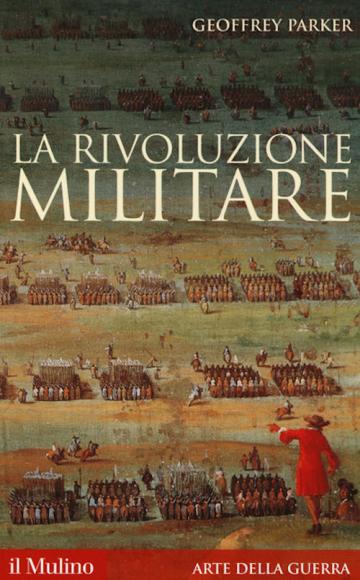Geoffrey Parker
Ed. Il Mulino, Bologna 2014
pagg.346
First published in 1988, this essay whose author is a British historian, currently a professor at Ohio State University, analyzes the way of fighting in the period from 1500 to 1800, coming to the conclusion that "The key to Western success in creating the first truly universal empires between 1500 and 1750 depended on those improvements in the ability to make war that go under the definition of a military revolution." Starting with the "Review the various ways in which Europeans fought wars in the XNUMXth and XNUMXth centuries", the author describes "How the rapid spread of firearms transformed the conduct of defensive and offensive operations." Many were, in the period in question, especially in Western Europe, "The logistical problems created by better fortifications and more powerful weapons."
"The arms race of the various powers took place both at sea and on land and in this context the military revolution offered European states the opportunity to extend their conflicts far beyond their beaches.", arriving, after finding indigenous allies, to spread their hostilities to other continents. The introduction of the cannon in the XNUMXth century made it possible to conquer cities which had hitherto been considered impregnable. On the other hand, however, “Military architects were developing a new defense system against artillery fire", first by lowering and reinforcing the walls. Then a moat was added which would have kept enemy artillery further away, making it more difficult to lay mines under the walls. But the dominant element of the new type of defensive fortifications was the bastion.
Small arms, both portable and towed, made their entrance among the firearms, but for a long time they were lower than the bow, both in terms of precision and range, until, in 1550, the musket"Gradually the musketeer became the master of the battlefields, from where he drove out all the other military specialists."
The growing confidence in firepower provoked the eclipse of cavalry and the development of infantry. Therefore, in Europe, “At the beginning of the modern age, the war was transformed on the basis of three important interdependent developments: a new use of firepower, a new type of fortifications and an increase in the size of armies. […] In the age of the military revolution the ability of individual governments and generals to supply the war often became the pivot around which the outcome of the armed conflict revolved. "
In addition to the certainty of having a job at a time when civil life did not guarantee it, it was mainly hardship and hunger that pushed men to join. But because the reserve of volunteers was never enough, governments also resorted to the forced recruitment of the locals, the recruitment of soldiers from a defeated enemy or the recruitment of entire units in other areas of Europe. "In war, as in peace, desertions and diseases, rather than enemy actions, were responsible for most of the losses." And since, for most European governments of the sixteenth and seventeenth centuries, the problems caused by the increase in the size of armies proved too immense for an immediate solution, "By the end of the XNUMXth century, several states had already begun to recruit and supply their armies by means of private contractors." Then the figure of the general-entrepreneur appeared who also recruited and maintained entire armies, "On behalf of governments without financial or human resources to perform this task themselves"This was because soldiers, however, had to be paid, equipped and fed.
To ensure the necessary logistical support for armies on the move, "The number of people following the troops could sometimes equal and occasionally exceed the total number of fighters."
Even at sea there was a revolution in the naval war, thanks to the adoption of the cannon, whose impact, however, was slow, as the installation on board required appropriate adaptations. So it happened that ramming and boarding were replaced by artillery broadsides. Therefore the three main innovations that appeared in the XNUMXth century were: battleships armed with cannons on the sides, the growth of firearms and fortresses capable of resisting artillery shots. And it was thanks to military superiority, based on the military revolution of the XNUMXth and XNUMXth centuries, that western nations managed to create the first global hegemony in history.
Gianlorenzo Capano












